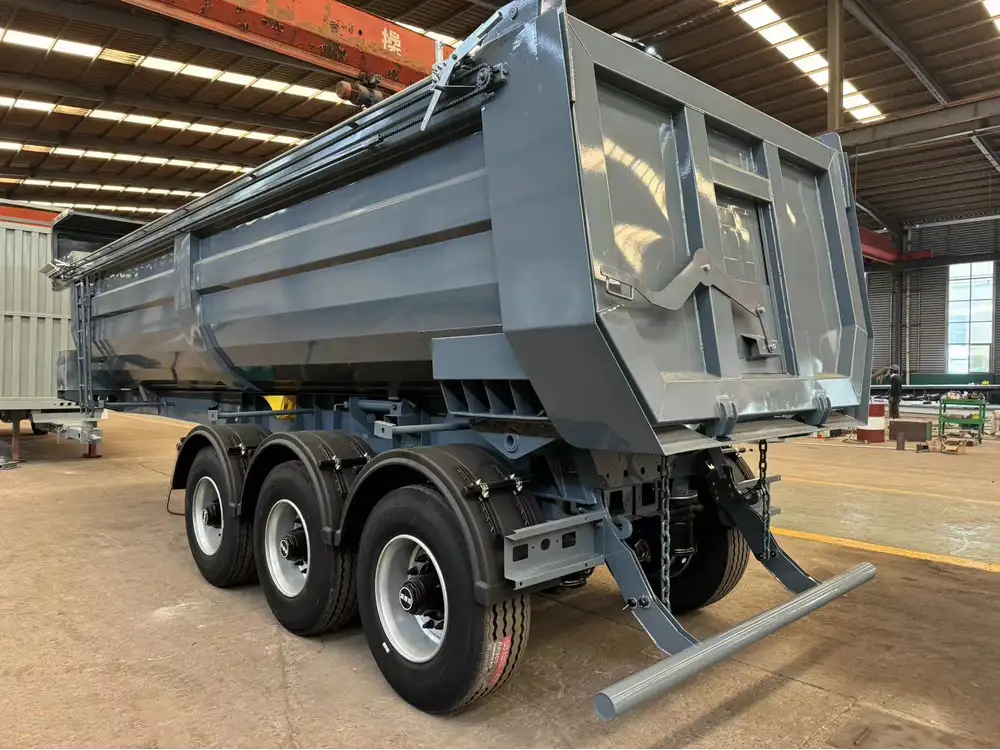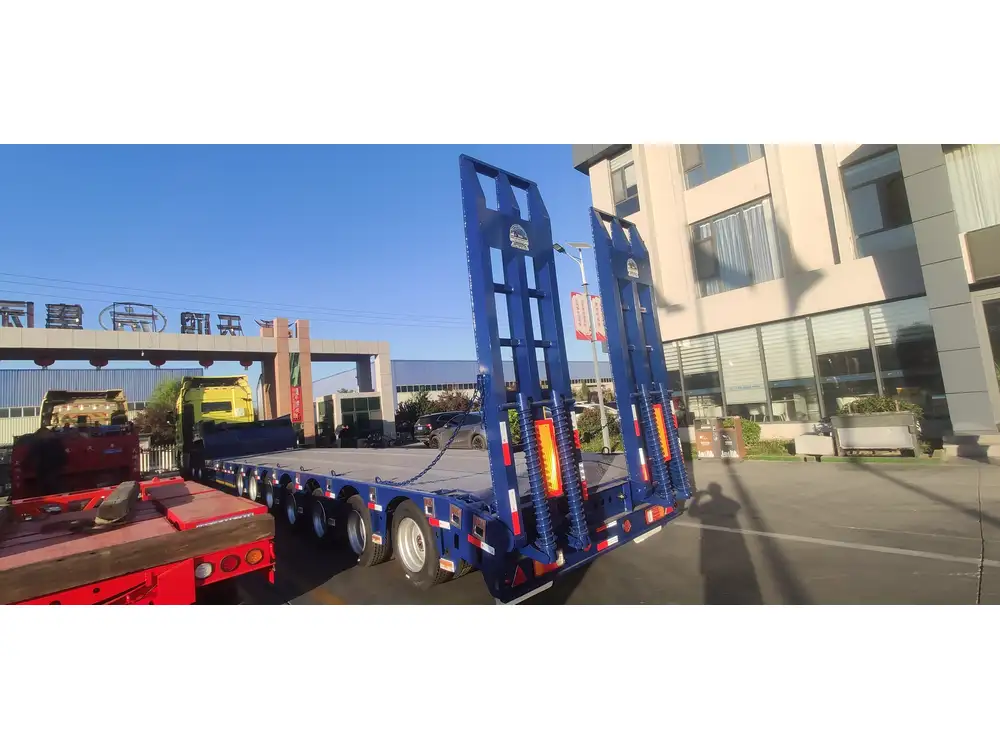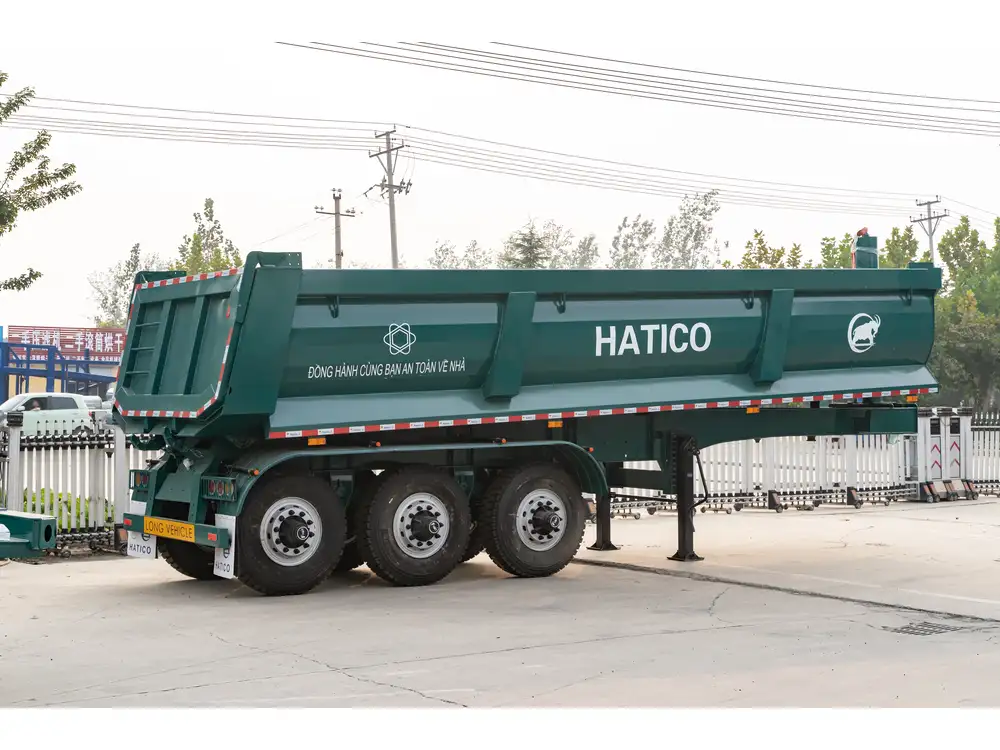Understanding the engine size of semi-trailers is crucial for logistics companies, fleet managers, and individual truck owners alike. This guide provides a detailed analysis of the factors that influence engine size, how to find the right specifications, and why it matters for your operations.
Table of Contents
Understanding Engine Size Basics
- Definition of Engine Size
- Importance of Engine Size in Semi-Trailers
Specifications of Semi-Trailer Engines
- Common Engine Sizes
- Engine Types Utilized
- Factors Influencing Engine Size Selection
Researching Engine Sizes for Semi-Trailers
- Manufacturer Specifications and Catalogs
- Online Industry Databases
- Consulting with Professionals
Calculating Appropriate Engine Size
- Load Capacity Requirements
- Terrain and Route Analysis
- Regulations and Legal Considerations
Practical Steps for Finding Engine Size
- Tools and Resources
- FAQs
Conclusion
- Summarizing the Importance of Knowing Engine Size
1. Understanding Engine Size Basics

Definition of Engine Size
Engine size, often referred to as displacement, is an essential measurement that indicates the total volume of all the cylinders in an engine. In semi-trailers, engine size is primarily measured in liters (L) or cubic inches (ci). This metric helps gauge the power output and efficiency of the engine, which consequently affects the overall performance of the semi-trailer.
Importance of Engine Size in Semi-Trailers
The engine size directly influences several factors including fuel efficiency, power delivery, and torque output, which are critical for hauling heavy loads over long distances. For instance, a larger engine may produce more horsepower and torque, enabling the vehicle to handle steeper gradients and heavier loads with ease while maintaining optimal fuel efficiency.
2. Specifications of Semi-Trailer Engines

Common Engine Sizes
Semi-trailer engines typically range from 5.9 to 15 liters in displacement. Below is a brief breakdown:
| Engine Size (L) | Typical Horsepower (HP) | Typical Torque (LB-FT) |
|---|---|---|
| 5.9 | 200-300 | 500-800 |
| 10.8 | 400-500 | 1,200-1,700 |
| 15.0 | 550-700 | 1,850-2,100 |
Engine Types Utilized
Engine types vary significantly, and manufacturers typically employ engines designed for heavy-duty performance. Common engine types include:
- Diesel Engines: Most widely used due to their torque capabilities and fuel efficiency.
- Natural Gas Engines: An environmentally friendly alternative but less common in heavy loads.
- Hybrid Engines: Growing in popularity for their fuel savings and lower emissions.
Factors Influencing Engine Size Selection
When selecting an appropriate engine size, consider the following factors:
- Fleet Composition: The size and type of other vehicles within a fleet influence decision-making.
- Intended Use: Different hauling tasks require varying power levels; for example, transporting heavy machinery demands a larger engine.
- Fuel Availability: Depending on your operational regions, access to diesel or natural gas fuel can impact engine selection.

3. Researching Engine Sizes for Semi-Trailers
Manufacturer Specifications and Catalogs
The first step in finding engine size is to consult the official specifications from manufacturers. Most companies maintain detailed catalogs that outline technical specifications including engine sizes, horsepower ratings, and recommendations.
Online Industry Databases
Utilizing online resources can vastly accelerate your research. Websites like the U.S. Environmental Protection Agency (EPA), Freightliner, and Kenworth provide comprehensive information on different models, making it easy to compare options based on engine size and performance.

Consulting with Professionals
Engaging with industry professionals, whether through forums, trade shows, or directly contacting manufacturers, can yield insights that are not always available in written form. Professional mechanics and fleet managers will often have practical knowledge that can greatly inform your engine size choice.
4. Calculating Appropriate Engine Size
Load Capacity Requirements
Assessing your load capacity requirements is fundamental. The engine must be capable of pulling the intended load efficiently. This calculation often involves determining the gross vehicle weight rating (GVWR) and ensuring that the engine size aligns with those figures.

Terrain and Route Analysis
It’s crucial to consider the terrains your semi-trailer will navigate. Hilly terrain, for example, generally necessitates a larger engine for sufficient power to ascend slopes. Conversely, flatter landscapes may allow for smaller engines while still meeting operational needs.
Regulations and Legal Considerations
Bear in mind that there are regulations governing the weight limits of semi-trailers, which can indirectly affect engine selection. Ensure that your choice complies with the weight and emissions regulations of your operating region.
5. Practical Steps for Finding Engine Size

Tools and Resources
To streamline the process of finding the right engine size, compile a list of tools and resources:
- Datasheets: Collect engine datasheets from manufacturers.
- Comparison Charts: Create charts to compare engine sizes versus performance metrics.
- Forums and Networks: Join online forums and communities tailored to truck and semi-trailer enthusiasts.
FAQs
Q1: Do all semi-trailers have the same engine sizes? A1: No, engine sizes vary significantly depending on the manufacturer and model of the semi-trailer.
Q2: Can I upgrade my engine size? A2: Upgrading to a larger engine is possible but may require additional modifications to your vehicle’s systems and components.
Q3: What is the average fuel efficiency for different engine sizes? A3: Fuel efficiency varies; typically, larger engines consume more fuel but can manage heavier loads more efficiently.
6. Conclusion
Knowing how to find and select the appropriate engine size for semi-trailers is fundamental for maximizing performance and operational efficiency. By comprehensively understanding engine sizes, specifications, and research methodologies outlined in this guide, you can make informed decisions that align with your logistic needs. Prioritizing engine specifications not only helps optimize your fleet management but also enhances overall productivity, ensuring your business thrives in a competitive environment.
As the industry evolves, staying informed will ensure that your operations maintain an edge over competitors, leading to successful journeys and satisfied customers. Being equipped with this knowledge empowers you to make choices with confidence, ultimately resulting in a more efficient and effective fleet.



